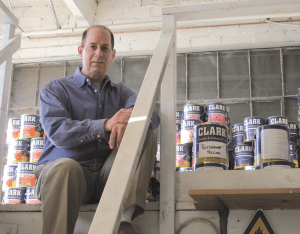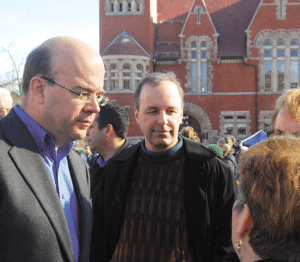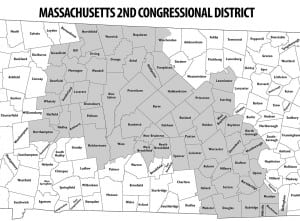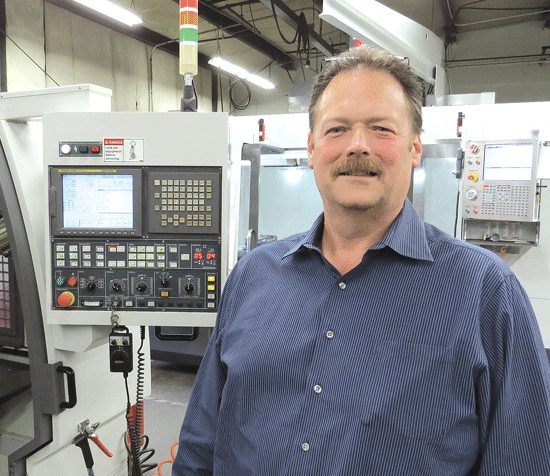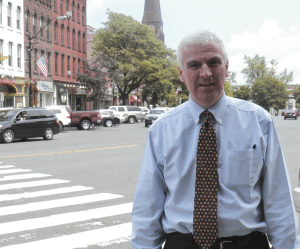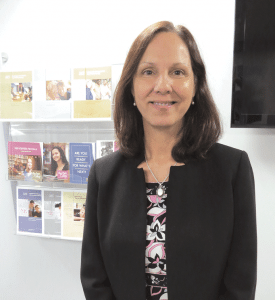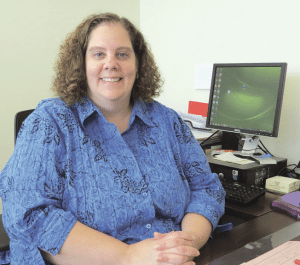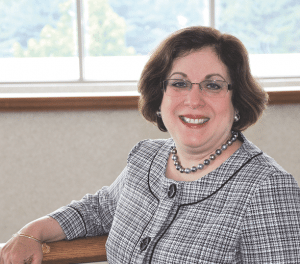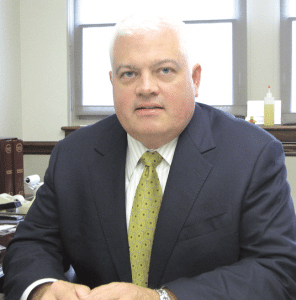The following real estate transactions (latest available) were compiled by Banker & Tradesman and are published as they were received. Only transactions exceeding $115,000 are listed. Buyer and seller fields contain only the first name listed on the deed.
FRANKLIN COUNTY
ASHFIELD
546 Old Stage Road
Ashfield, MA 01330
Amount: $238,000
Buyer: Kenneth W. Davis
Seller: Todd D. Senecal
Date: 05/31/13
BERNARDSTON
363 Bald Mountain Road
Bernardston, MA 01337
Amount: $174,000
Buyer: Scott M. Stacy
Seller: Keith M. Wilda
Date: 05/30/13
COLRAIN
12 Thibodeau Dr.
Colrain, MA 01340
Amount: $150,000
Buyer: Dean M. Basara
Seller: Ellen M. Clark
Date: 05/31/13
CONWAY
40 Whately Glen Road
Conway, MA 01341
Amount: $445,000
Buyer: John A. Moore
Seller: Dorothy Osterman
Date: 05/30/13
DEERFIELD
34 Lee Road
Deerfield, MA 01373
Amount: $315,000
Buyer: David V. Tynan
Seller: Walter D. Pajonk
Date: 05/28/13
56 Mathews Road
Deerfield, MA 01373
Amount: $263,000
Buyer: Matthew E. Janus
Seller: Michelle Olavegoya
Date: 05/31/13
5 Memorial St.
Deerfield, MA 01342
Amount: $400,000
Buyer: Robert Hale
Seller: Stephanie Ingrassia
Date: 05/31/13
10 Mountain Road
Deerfield, MA 01373
Amount: $384,000
Buyer: Kevin A. Wissmann
Date: 05/31/13
20 Mountain Road
Deerfield, MA 01373
Amount: $295,000
Buyer: Deborah J. Picking
Seller: Kevin A. Wissman
Date: 05/31/13
ERVING
6 Moore St.
Erving, MA 01344
Amount: $160,000
Buyer: Nicholis F. Lapan
Seller: Marsha J. Browning
Date: 05/20/13
43 Ridge Road
Erving, MA 01344
Amount: $213,000
Buyer: Brian E. Frank
Seller: Mathew E. Janus
Date: 05/31/13
27 River St.
Erving, MA 01344
Amount: $155,900
Buyer: Kathleen S. Hepburn
Seller: Nancy L. Stone
Date: 05/31/13
GREENFIELD
5 Arch St.
Greenfield, MA 01301
Amount: $169,000
Buyer: MW&MW Realty LLC
Seller: 1 Archi Place Inc.
Date: 05/31/13
99 Burnham Road
Greenfield, MA 01301
Amount: $197,000
Buyer: Kathleen D. Kelleher
Seller: Dency Dokoozian
Date: 05/31/13
159 Chapman St.
Greenfield, MA 01301
Amount: $135,000
Buyer: Jennifer E. Antonellis
Seller: UMass Five College Credit Union
Date: 05/29/13
23 Cooke St.
Greenfield, MA 01301
Amount: $182,000
Buyer: Nancy M. Richard
Seller: Stacy A. Metzger
Date: 05/31/13
19 Eastern Ave.
Greenfield, MA 01301
Amount: $187,000
Buyer: Russell A. Kaubris
Seller: Sanford S. Cotton
Date: 05/29/13
34 Glenbrook Dr.
Amount: $317,000
Buyer: Glenbrook Residence LLC
Seller: Michael P. Boudreau
Date: 05/31/13
44 Graves Road
Greenfield, MA 01301
Amount: $167,000
Buyer: Richard T. Haskins
Seller: Jay V. Mauri
Date: 05/23/13
9 Grinnell St.
Greenfield, MA 01301
Amount: $332,000
Buyer: Mary M. McManus
Seller: Robert Catlin
Date: 05/30/13
14 Locust St.
Greenfield, MA 01301
Amount: $170,000
Buyer: Annette M. Chamberlin
Seller: Michael McGrath
Date: 05/31/13
24 Park Ave.
Greenfield, MA 01301
Amount: $188,000
Buyer: Ashley R. Stokes
Seller: Daniel Smith
Date: 05/31/13
15 Prentice Ave.
Greenfield, MA 01301
Amount: $147,600
Buyer: Kelly L. Mignault
Seller: Frank W. Domitrz
Date: 05/21/13
122 Sanderson St.
Greenfield, MA 01301
Amount: $167,500
Buyer: Jennifer L. Schmidt
Seller: Maureen Walsh
Date: 05/24/13
LEYDEN
Eden Trail Branch
Leyden, MA 01301
Amount: $314,000
Buyer: Elizabeth Emery
Seller: Mitchell R. Damon
Date: 05/24/13
MONTAGUE
151 3rd St.
Montague, MA 01376
Amount: $116,000
Buyer: Cottage Industries LLC
Seller: 151 3rd Street LLC
Date: 05/31/13
163 L St.
Montague, MA 01376
Amount: $290,000
Buyer: William J. Doyle
Seller: Stanley W. Lewandowski
Date: 05/30/13
NORTHFIELD
Mill St.
Northfield, MA 01354
Amount: $210,000
Buyer: Walter C. Jaworski
Seller: Northfield Mt. Hermon School
Date: 05/21/13
ORANGE
131 West Main St.
Orange, MA 01364
Amount: $1,250,000
Buyer: John Dunphy
Seller: Orange Inv. LLC
Date: 05/31/13
SUNDERLAND
691 Amherst Road
Sunderland, MA 01375
Amount: $181,000
Buyer: Joseph F. Ranker
Seller: Todd A. Cromack
Date: 05/28/13
200 North Main St.
Sunderland, MA 01375
Amount: $175,900
Buyer: Paul J. Wanczyk
Seller: Alec E. Cybulski
Date: 05/23/13
WENDELL
210 Lockes Village Road
Wendell, MA 01379
Amount: $500,000
Buyer: LGW Holdings LLC
Seller: Robert M. Cabral
Date: 05/31/13
HAMPDEN COUNTY
AGAWAM
59 Alhambra Circle South
Agawam, MA 01001
Amount: $131,750
Buyer: Deutsche Bank National
Seller: Stephanie A. Kelly
Date: 05/29/13
19 Brookline Ave.
Agawam, MA 01030
Amount: $120,000
Buyer: Scott C. Smith
Seller: Greguoli John J., (Estate)
Date: 05/30/13
27 Depalma St.
Agawam, MA 01030
Amount: $170,000
Buyer: Pamala J. Taylor
Seller: Joseph F. Amaral
Date: 05/31/13
12 Federal St.
Agawam, MA 01001
Amount: $154,500
Buyer: Joshua A. Cicia
Seller: Michael Knight
Date: 05/31/13
41 Fernwood Dr.
Agawam, MA 01001
Amount: $240,000
Buyer: Anthony Depalma
Seller: Julie Habib
Date: 05/22/13
7 Lango Lane
Agawam, MA 01001
Amount: $115,000
Buyer: Scott A. Valentino
Seller: PBI Inc.
Date: 05/31/13
1664 Main St.
Agawam, MA 01001
Amount: $250,000
Buyer: Stuart Amusement Co.
Seller: MV Ent. Inc.
Date: 05/28/13
22 Parkview Dr.
Agawam, MA 01030
Amount: $225,500
Buyer: Edward R. Heim
Seller: Poplar Dev. LLC
Date: 05/28/13
48 Reed St.
Agawam, MA 01001
Amount: $215,000
Buyer: Christopher G. Manekas
Seller: Barbara A. Skiba
Date: 05/30/13
140 Senator Ave.
Agawam, MA 01001
Amount: $195,000
Buyer: Brendan A. Halley
Seller: Louis M. Ramah
Date: 05/30/13
1009 Suffield St.
Agawam, MA 01001
Amount: $237,000
Buyer: Richard Chavez
Seller: William H. Cullen
Date: 05/31/13
39 Tanglewood Lane
Agawam, MA 01030
Amount: $230,000
Buyer: Michelle R. Balch
Seller: Edward R. Heim
Date: 05/28/13
BLANDFORD
34 Brookman Dr.
Blandford, MA 01008
Amount: $285,000
Buyer: Peter J. Pappas
Seller: Peter J. Maynard
Date: 05/21/13
BRIMFIELD
243 Brookfield Road
Brimfield, MA 01010
Amount: $360,000
Buyer: Frederick C. Byrne
Seller: Dominic F. Mastroianni
Date: 05/30/13
28 Saint George Road
Brimfield, MA 01010
Amount: $189,000
Buyer: Wendy W. Denning
Seller: Susan G. Woods
Date: 05/24/13
CHESTER
520 Skyline Trail
Chester, MA 01011
Amount: $186,811
Buyer: Wells Fargo Bank
Seller: Douglas B. Arnold
Date: 05/30/13
CHICOPEE
123 1st Ave.
Chicopee, MA 01020
Amount: $2,900,000
Buyer: JMDH Real Estate Of Chicopee
Seller: U.S. Postal Service
Date: 05/31/13
77 Bourbeau St.
Chicopee, MA 01020
Amount: $147,000
Buyer: Kyle P. Kokosa
Seller: Kenneth H. Backlund
Date: 05/30/13
536 Britton St.
Chicopee, MA 01020
Amount: $231,500
Buyer: LTL LLC
Seller: Aaron W. Butcher
Date: 05/29/13
597 Broadway St.
Chicopee, MA 01020
Amount: $129,000
Buyer: Matthew M. Balut
Seller: Dube, Simone A., (Estate)
Date: 05/29/13
70 Fernwood St.
Chicopee, MA 01020
Amount: $165,000
Buyer: Bryan J. Klein
Seller: John R. Ferraro
Date: 05/23/13
30 Hampshire St.
Chicopee, MA 01020
Amount: $165,000
Buyer: Jeremy P. Foster
Seller: Alfred J. Gosselin
Date: 05/31/13
17 Highview Ave.
Chicopee, MA 01013
Amount: $158,000
Buyer: Jesse L. Lengieza
Seller: Everett J. Sexton
Date: 05/31/13
81 Julia Ave.
Chicopee, MA 01020
Amount: $191,000
Buyer: Kevin R. Juchno
Seller: Sandra J. Grenier
Date: 05/31/13
121 Lafayette St.
Chicopee, MA 01020
Amount: $120,000
Buyer: Nichole A. Morneau
Seller: Babineau Joseph C., (Estate)
Date: 05/30/13
73 McDonald Dr.
Chicopee, MA 01020
Amount: $258,000
Buyer: Robert R. Pluta
Seller: Roland G. Provost
Date: 05/21/13
145 Mckinstry Ave.
Chicopee, MA 01013
Amount: $204,000
Buyer: Vadim Ruge
Seller: James E. Burns
Date: 05/24/13
463 Memorial Dr.
Chicopee, MA 01020
Amount: $3,450,000
Buyer: Mittas Inn LLC
Seller: TPSN LLC
Date: 05/20/13
505 Memorial Dr.
Chicopee, MA 01020
Amount: $250,000
Buyer: Jayanth Pasupuleti
Seller: Columbus Ave. Realty LLC
Date: 05/22/13
63 Murphy Lane
Chicopee, MA 01020
Amount: $184,000
Buyer: James P. Laclair
Seller: Jay T. Dirico
Date: 05/24/13
69 Olko Circle
Chicopee, MA 01020
Amount: $216,000
Buyer: Caroline A. Tatro
Seller: RLDR LLC
Date: 05/31/13
EAST LONGMEADOW
11 Converse Circle
East Longmeadow, MA 01028
Amount: $132,000
Buyer: Jeffrey D. Dalessio
Seller: David K. Marshall
Date: 05/22/13
112 Dearborn St.
East Longmeadow, MA 01028
Amount: $199,900
Buyer: Wayne L. Cox
Seller: D. A. Williams
Date: 05/30/13
32 Greenacre Lane
East Longmeadow, MA 01028
Amount: $199,500
Buyer: Elizabeth A. Estabrook
Seller: Phyllis M. Rathbun
Date: 05/30/13
227 Kibbe Road
East Longmeadow, MA 01028
Amount: $180,000
Buyer: Moltenbrey Builders LLC
Seller: Laplante Construction Inc
Date: 05/31/13
20 Lynwood Road
East Longmeadow, MA 01028
Amount: $129,500
Buyer: Andre Sample
Seller: Randy W. Sample
Date: 05/24/13
27 Marci Ave.
East Longmeadow, MA 01028
Amount: $418,000
Buyer: Charles H. Gray
Seller: Daniel P. Prestegaard
Date: 05/28/13
Orchard Road
East Longmeadow, MA 01028
Amount: $125,000
Buyer: Jane K. Furnas
Seller: J. Chapdelaine & Sons Inc.
Date: 05/30/13
226 Parker St.
East Longmeadow, MA 01028
Amount: $215,000
Buyer: Anthony P. Potito
Seller: Louis G. Lapointe
Date: 05/24/13
25 Savoy Ave.
East Longmeadow, MA 01028
Amount: $249,000
Buyer: Kathleen E. Kalmbach
Seller: Timber Dev. LLC
Date: 05/31/13
214 Shaker Road
East Longmeadow, MA 01028
Amount: $182,500
Buyer: Garrett E. Goguen
Seller: Ernest Moller
Date: 05/24/13
100 Tanglewood Dr.
East Longmeadow, MA 01028
Amount: $316,000
Buyer: Luis M. Martinez
Seller: William R. Dennis
Date: 05/29/13
25 Thompson St.
East Longmeadow, MA 01028
Amount: $190,000
Buyer: Anthony Sarno
Seller: Edward M. Bellerose
Date: 05/28/13
18 Yorkshire Place
East Longmeadow, MA 01028
Amount: $275,900
Buyer: Daniel J. Brookes
Seller: Rhonda Y. Coughlin
Date: 05/30/13
GRANVILLE
462 Main Road
Granville, MA 01034
Amount: $200,000
Buyer: Apryl Adelman
Seller: Peter Strniste
Date: 05/24/13
462 Main Road
Granville, MA 01034
Amount: $201,000
Buyer: Barbara Greene
Seller: Peter Strniste
Date: 05/30/13
241 North Lane
Granville, MA 01034
Amount: $240,000
Buyer: Colin D. Neylon
Seller: Gary C. McLaughlin
Date: 05/31/13
HAMPDEN
52 Echo Valley Dr.
Hampden, MA 01036
Amount: $138,000
Buyer: Christine A. Yacovone
Seller: Ann M. Joyce
Date: 05/24/13
246 South Monson Road
Hampden, MA 01036
Buyer: Katelyn R. Marcelina
Seller: Hugh K. Martin
Date: 05/31/13
86 Thresher Road
Hampden, MA 01036
Amount: $364,000
Buyer: Gregory J. Clewes
Seller: Robert A. Chaffee
Date: 05/31/13
134 Thresher Road
Hampden, MA 01036
Amount: $239,000
Buyer: Jason T. Broom
Seller: Joseph M. Hickson
Date: 05/22/13
HOLLAND
9 Island Road
Holland, MA 01521
Amount: $260,000
Buyer: Robert W. Hellinger
Seller: James A. Faust
Date: 05/31/13
10 Julia Ann Dr.
Holland, MA 01521
Amount: $174,000
Buyer: Christian D. Lund
Seller: David N. Goodman
Date: 05/21/13
93 Leno Road
Holland, MA 01521
Amount: $169,000
Buyer: Christopher C. Smith
Seller: Virginia M. Hemingway
Date: 05/30/13
38 Marcey Place
Holland, MA 01521
Amount: $200,000
Buyer: James M. MacDonald
Seller: Durgin, Robert R., (Estate)
Date: 05/29/13
HOLYOKE
37 Anderson Ave.
Holyoke, MA 01040
Amount: $125,000
Buyer: John A. Ramondetta
Seller: Moynihan William E., (Estate)
Date: 05/31/13
41 Cabot St.
Holyoke, MA 01040
Amount: $135,000
Buyer: Luis R. Cotto
Seller: Rafael Alvarado
Date: 05/22/13
105 Dartmouth St.
Holyoke, MA 01040
Amount: $160,000
Buyer: Patrick W. Lunney
Seller: Paul J. Paoli
Date: 05/29/13
455 Homestead Ave.
Holyoke, MA 01040
Amount: $202,000
Buyer: Shivani Patel
Seller: Jaclyn M. Caceci
Date: 05/24/13
1103 Main St.
Holyoke, MA 01040
Amount: $115,000
Buyer: Felix A. Santiago
Seller: Marcelino Alicea
Date: 05/31/13
48 Meadowview Road
Holyoke, MA 01040
Amount: $209,000
Buyer: Katie A. Gallagher
Seller: Robert K. Laroche
Date: 05/30/13
53 Mueller Road
Holyoke, MA 01040
Amount: $200,000
Buyer: Zachary R. Vozella
Seller: Cha Kat Realty LLC
Date: 05/30/13
20 Pearson Road
Holyoke, MA 01040
Amount: $223,000
Buyer: Kerry A. O’Connell
Seller: James D. Hall
Date: 05/23/13
93 Pine St.
Holyoke, MA 01040
Amount: $140,000
Buyer: Templo Pentecostal Inc.
Seller: Asamblea DeIglesias Cristo
Date: 05/30/13
LONGMEADOW
85 Academy Dr.
Longmeadow, MA 01106
Amount: $309,000
Buyer: John J. Tranghese
Seller: Helen M. Weiner
Date: 05/22/13
56 Bliss Road
Longmeadow, MA 01106
Amount: $230,900
Buyer: Michele M. Callaghan
Seller: Deborah A. Dalton
Date: 05/31/13
143 Brookwood Dr.
Longmeadow, MA 01106
Amount: $305,000
Buyer: Huimin Chen
Seller: John Tranghese
Date: 05/22/13
121 Captain Road
Longmeadow, MA 01106
Amount: $431,000
Buyer: Sean M. Marien
Seller: Elizabeth C. Lovett
Date: 05/30/13
19 Ellington St.
Longmeadow, MA 01106
Amount: $440,000
Buyer: Spencer T. Martin
Seller: Suzanne K. Barron
Date: 05/20/13
101 Ely Way
Longmeadow, MA 01106
Amount: $690,000
Buyer: Eric M. Polep
Seller: Larry N. Port
Date: 05/24/13
122 Kenmore Dr.
Longmeadow, MA 01106
Amount: $275,000
Buyer: Christopher A. Davis
Seller: Daniel P. Murphy
Date: 05/31/13
174 Meadowlark Dr.
Longmeadow, MA 01106
Amount: $260,000
Buyer: Edward R. Gaudreau
Seller: Theresa A. Gallagher
Date: 05/31/13
46 Plymouth Road
Longmeadow, MA 01106
Amount: $235,000
Buyer: Lisa B. Goldberg
Seller: Glenn Keedy
Date: 05/31/13
34 Roseland Ter.
Longmeadow, MA 01106
Amount: $275,000
Buyer: Craig Belgard
Seller: Stanley J. Pisarski
Date: 05/31/13
128 Williams St.
Longmeadow, MA 01106
Amount: $280,000
Buyer: Verity A. Goldberg
Seller: Jason T. Whitfield
Date: 05/31/13
568 Williams St.
Longmeadow, MA 01106
Amount: $208,000
Buyer: Christopher A. Casale
Seller: Jerome H. Radding
Date: 05/20/13
LUDLOW
199 Cady St.
Ludlow, MA 01056
Amount: $135,000
Buyer: Gerald E. Dubour
Seller: Melody M. Taylor
Date: 05/31/13
Focosi Ln
Ludlow, MA 01056
Amount: $308,000
Buyer: Kenneth E. Jackson
Seller: Misha Dev. LLC
Date: 05/24/13
52 Hunter Road
Ludlow, MA 01056
Amount: $205,000
Buyer: Jose A. Sanches
Seller: Arminda Fernandes
Date: 05/24/13
266 Miller St.
Ludlow, MA 01056
Amount: $116,750
Buyer: Chi Lysak
Seller: Vantium Reo Capital Mark
Date: 05/21/13
Parker Lane
Ludlow, MA 01056
Amount: $129,900
Buyer: Hemlock Ridge LLC
Seller: Whitetail Wreks LLC
Date: 05/31/13
124 Posner Circle
Ludlow, MA 01056
Amount: $189,500
Buyer: Jennifer L. Calkins
Seller: Michael E. Labier
Date: 05/24/13
16 Roy St.
Ludlow, MA 01056
Amount: $150,000
Buyer: Adam G. Vehr
Seller: Manuel R. Marques
Date: 05/28/13
MONSON
29 Circle Dr.
Monson, MA 01057
Amount: $215,000
Buyer: Kevin P. Somers
Seller: Margaret A. Royce
Date: 05/30/13
141 East Hill Road
Monson, MA 01057
Amount: $290,000
Buyer: Sheila M. Rivest
Seller: Paul A. Lapenas
Date: 05/24/13
251 Palmer Road
Monson, MA 01057
Amount: $235,000
Buyer: Mark P. Wurszt
Seller: Kevin J. Biermann
Date: 05/31/13
PALMER
91 South High St.
Palmer, MA 01069
Amount: $175,000
Buyer: Paulo J. Palatino
Seller: Edward A. Kareta
Date: 05/31/13
SPRINGFIELD
394 Abbott St.
Springfield, MA 01118
Amount: $172,000
Buyer: Patricia A. Michaelian
Seller: Martyn L. Gallagher
Date: 05/24/13
129 Acrebrook Road
Springfield, MA 01129
Amount: $215,000
Buyer: Kenneth Norris
Seller: PCL Construction Inc.
Date: 05/24/13
217 Arnold Ave.
Springfield, MA 01119
Amount: $137,000
Buyer: Eunice Jones
Seller: William M. Zoll
Date: 05/23/13
101 Avery St. #135
Springfield, MA 01119
Amount: $229,900
Buyer: Keena S. Clarke-Guillaume
Seller: Elaine C. Graham
Date: 05/30/13
14 Benz St.
Springfield, MA 01118
Amount: $138,856
Buyer: FNMA
Seller: Christina H. Houghton
Date: 05/31/13
1245 Bradley Road
Springfield, MA 01118
Amount: $121,000
Buyer: Daniel J. Molta
Seller: HSBC Mortgage Services Inc.
Date: 05/30/13
148 Breckwood Circle
Springfield, MA 01119
Amount: $150,000
Buyer: Opus Durum LLC
Seller: Kenneth L. Fitzgibbon
Date: 05/31/13
65 Brewster St.
Springfield, MA 01119
Amount: $160,900
Buyer: Allen M. Beverly
Seller: Timothy Ruth
Date: 05/24/13
15 Candice Circle
Springfield, MA 01107
Amount: $125,000
Buyer: Ashley A. Chenier
Seller: Dupont, Helen T., (Estate)
Date: 05/31/13
57 Dayton St.
Springfield, MA 01118
Amount: $145,000
Buyer: Sandra J. Parker
Seller: Shirley Nichols
Date: 05/31/13
523 Dickinson St.
Springfield, MA 01108
Amount: $130,000
Buyer: Lisa L. Torres
Seller: Maria H. Hamilakis
Date: 05/24/13
154 Ellsworth Ave.
Springfield, MA 01118
Amount: $148,674
Buyer: Midfirst Bank
Seller: Midfirst Bank
Date: 05/20/13
75 Fairway Dr.
Springfield, MA 01108
Amount: $144,850
Buyer: Brett A. Gelinas
Seller: Seldin FT
Date: 05/31/12
46 Fullerton St.
Springfield, MA 01151
Amount: $128,900
Buyer: Edwin Vega
Seller: Danica Lariviere
Date: 05/24/13
78 Garfield St.
Springfield, MA 01108
Amount: $138,800
Buyer: Norman F. Bliss
Seller: Melro Assocs. Inc.
Date: 05/24/13
256 Greenaway Dr.
Springfield, MA 01109
Amount: $155,000
Buyer: Jessica Medina
Seller: Matthew M. Bailey
Date: 05/31/13
93 Gresham St.
Springfield, MA 01119
Amount: $152,950
Buyer: Bayview Loan Servicing
Seller: Felix Feliciano
Date: 05/30/13
130 Hartwick St.
Springfield, MA 01108
Amount: $180,000
Buyer: Maria Dangelantonio
Seller: Sherry L. Pio
Date: 05/29/13
15 King St.
Springfield, MA 01109
Amount: $300,000
Buyer: Aaron L. Dunn
Seller: Profit Sharing Plan TR
Date: 05/20/13
950 Main St.
Springfield, MA 01103
Amount: $1,042,236
Buyer: ARC CBSFD MA 1 LLC
Seller: Inland Amer CFG Portfolio
Date: 05/20/13
27 Mountainview St.
Springfield, MA 01108
Amount: $129,500
Buyer: Shawn A. Rairigh
Seller: Phoebe A. Siter
Date: 05/31/13
33 Ontario St.
Springfield, MA 01104
Amount: $139,000
Buyer: Tracey A. Facchini
Seller: Hugh M. Smith
Date: 05/23/13
125 Paridon St.
Springfield, MA 01118
Amount: $540,000
Buyer: Camelback LLC
Seller: Camelback LLC
Date: 05/21/13
19 Rhinebeck Ave.
Springfield, MA 01129
Amount: $178,000
Buyer: Dianne M. Kepner
Seller: Raymond J. Martin
Date: 05/20/13
75 South Branch Pkwy.
Springfield, MA 01118
Amount: $175,000
Buyer: Alyssa S. Dunn
Seller: Adam Garand
Date: 05/29/13
41 Silver St.
Springfield, MA 01107
Amount: $160,000
Buyer: Wilberto M. Saez
Seller: Bernard R. Butler
Date: 05/30/13
Sunnybrook Road
Springfield, MA 01101
Amount: $151,000
Buyer: Frank R. Marvici
Seller: TJM Properties LLC
Date: 05/28/13
200 Tapley St.
Springfield, MA 01104
Amount: $1,060,000
Buyer: Pazmino Realty LLC
Seller: Polman Realty LLC
Date: 05/23/13
69 Teakwood Road
Springfield, MA 01128
Amount: $146,500
Buyer: Lauren E. Pauze
Seller: Sandra L. Liquori
Date: 05/29/13
20 Treetop Ave.
Springfield, MA 01118
Amount: $127,000
Buyer: Hee W. Yi
Seller: Anthony C. Racco
Date: 05/20/13
712 White St.
Springfield, MA 01101
Amount: $225,000
Buyer: Charles Croney
Seller: Elaine C. Graham
Date: 05/29/13
SOUTHWICK
196 Berkshire Ave.
Southwick, MA 01077
Amount: $400,000
Buyer: Ralph H. Ramsdell
Seller: Girard Homes Inc.
Date: 05/30/13
111 Granville Road
Southwick, MA 01077
Amount: $395,000
Buyer: Peter A. Bennett
Seller: David J. Henry
Date: 05/23/13
10 Maple St.
Southwick, MA 01077
Amount: $137,500
Buyer: Joey Jacob
Seller: Jeffrey M. Comee
Date: 05/31/13
4 Sugar Maple Lane
Southwick, MA 01077
Amount: $162,000
Buyer: Holly E. Amanti
Seller: Pinnacle Estates At The Ranch
Date: 05/23/13
WALES
9 Main St.
Wales, MA 01081
Amount: $234,000
Buyer: Christopher R. Ryan
Seller: Mary J. McGlynn
Date: 05/21/13
WESTFIELD
3 Bates Road
Westfield, MA 01085
Amount: $210,000
Buyer: Kenneth Dagenais
Seller: Shawn A. Amell
Date: 05/31/13
5 Butternut Road
Westfield, MA 01085
Amount: $220,000
Buyer: Jason Desormier
Seller: David H. Darling
Date: 05/24/13
50 Canal Dr.
Amount: $230,000
Buyer: Sheila Sponberg
Seller: Pamela Norris
Date: 05/31/13
12 City View Blvd.
Westfield, MA 01085
Amount: $163,000
Buyer: Robert L. Blanch
Seller: Linda M. Vela
Date: 05/31/13
26 Cross St.
Westfield, MA 01085
Amount: $170,000
Buyer: Cynthia F. Bullard
Seller: Thomas S. Turner
Date: 05/30/13
15 Deepwoods Dr.
Westfield, MA 01085
Amount: $215,000
Buyer: City Of Westfield
Seller: John E. Harris
Date: 05/20/13
78 Granville Road #40
Westfield, MA 01085
Amount: $400,179
Buyer: William E. Freeman
Seller: Granville Road LLC
Date: 05/24/13
187 Granville Road
Westfield, MA 01085
Amount: $154,000
Buyer: Alexander D. Fagnand
Seller: Ronald F. Pac
Date: 05/30/13
316 Granville Road
Westfield, MA 01085
Amount: $224,900
Buyer: Brian L. Osowski
Seller: William M. Brady
Date: 05/29/13
68 Hagan Ave.
Westfield, MA 01085
Amount: $151,358
Buyer: FHLM
Seller: Tina M. Lamore
Date: 05/30/13
7 Jeanne Marie Dr.
Westfield, MA 01085
Amount: $585,000
Buyer: Annie L. Potts
Seller: Jeanne M. Beltrandi
Date: 05/24/13
72 Larchly Ave.
Westfield, MA 01085
Amount: $176,000
Buyer: Laura L. Christiansen
Seller: Pressey, Jacqueline J., (Estate)
Date: 05/29/13
77 Moseley Ave.
Westfield, MA 01085
Amount: $175,000
Buyer: Craig A. McRobbie
Seller: John J. Wiley
Date: 05/28/13
36 Sunbriar Dr.
Westfield, MA 01085
Amount: $269,900
Buyer: Shawn A. Amell
Seller: Nicholas D. Cremonti
Date: 05/31/13
46 Zephyr Dr.
Westfield, MA 01085
Amount: $180,000
Buyer: Richard Leclair
Seller: Barnes Herbert S., (Estate)
Date: 05/31/13
WILBRAHAM
90 Chilson Road
Wilbraham, MA 01095
Amount: $425,000
Buyer: Cheryl C. Clapprood
Seller: Deborah A. Nacewicz
Date: 05/31/13
1155 Glendale Road
Wilbraham, MA 01095
Amount: $520,000
Buyer: Michael V. Tirabassi
Seller: Robert E. Egerton
Date: 05/31/13
51 Monson Road
Wilbraham, MA 01095
Amount: $270,000
Buyer: Mapleshade PT
Seller: David J. Ziter
Date: 05/21/13
212 Springfield St.
Wilbraham, MA 01095
Amount: $772,000
Buyer: Mary B. Valentine
Seller: John E. Stambaugh
Date: 05/24/13
WEST SPRINGFIELD
57 Beech Hill Road
West Springfield, MA 01030
Amount: $327,165
Buyer: Joseph J. Damour
Seller: Beech Hill Construction Inc.
Date: 05/28/13
93 Bretton Road
West Springfield, MA 01089
Amount: $360,000
Buyer: Kyle G. Morin
Seller: Joan E. Daley
Date: 05/28/13
60 Druids Lane
West Springfield, MA 01089
Amount: $145,000
Buyer: Elizabeth A. Marshall
Seller: Laurie L. Lefebvre
Date: 05/24/13
92 East Gooseberry Road
West Springfield, MA 01089
Amount: $210,000
Buyer: Kody A. Archambault
Seller: Vincent S. Marceno
Date: 05/21/13
76 Greystone Ave.
West Springfield, MA 01089
Amount: $173,000
Buyer: Erin E. Lyncosky
Seller: Patricia D. Williford
Date: 05/31/13
51 Lantern Lane
West Springfield, MA 01089
Amount: $260,000
Buyer: Brian S. Brady
Seller: Todd A. Thibodeau
Date: 05/30/13
208 Sibley Ave.
West Springfield, MA 01089
Amount: $209,000
Buyer: Vincent Depergola
Seller: Aaron Corley
Date: 05/31/13
646 Westfield St.
West Springfield, MA 01089
Amount: $240,000
Buyer: Angelica Props. LLC
Seller: Drew A. Demay
8 William St.
West Springfield, MA 01089
Amount: $143,000
Buyer: Francis M. Lewis
Seller: Andrey Parchinskiy
Date: 05/31/13
40 Woodbrook Terrace
West Springfield, MA 01089
Amount: $265,000
Buyer: Mark M. Salamon
Seller: Peoples United Bank
Date: 05/31/13
HAMPSHIRE COUNTY
AMHERST
72 Concord Way
Amherst, MA 01002
Amount: $785,000
Buyer: Ambreen Bawa
Seller: Bercume Construction LLC
Date: 05/31/13
346 Lincoln Ave.
Amherst, MA 01002
Amount: $515,000
Buyer: Killian R. O’Connell
Seller: David J. Charron
Date: 05/28/13
580 Market Hill Road
Amherst, MA 01002
Amount: $460,000
Buyer: Jeffery M. Cook
Seller: Oliver T. Miller
Date: 05/29/13
53 Meadow St.
Amherst, MA 01002
Amount: $358,000
Buyer: Killian R. O’Connell
Seller: George R. Scialoia
Date: 05/29/13
63 Red Gate Lane
Amherst, MA 01002
Amount: $290,000
Buyer: Kurt C. Wise
Seller: Irene Nystorm
Date: 05/28/13
820 South East St.
Amherst, MA 01002
Amount: $424,900
Buyer: Lisa Whitmore PT
Seller: Homeworks Construction Co. Inc
Date: 05/30/13
1204 South East St.
Amherst, MA 01002
Amount: $280,000
Buyer: Kathleen J. Hartford
Seller: Shumway, Wilbur O., (Estate)
Date: 05/20/13
1459 South East St.
Amherst, MA 01002
Amount: $140,000
Buyer: Erik C. Wight
Seller: Paul E. White
Date: 05/24/13
360 South Pleasant St.
Amherst, MA 01002
Amount: $764,000
Buyer: William C. Taubman
Seller: Roy I. Hare
Date: 05/24/13
228 Shays St.
Amherst, MA 01002
Amount: $570,000
Buyer: Timothy J. Anderson
Seller: Michael MacDonald
Date: 05/23/13
45 Spaulding St.
Amherst, MA 01002
Amount: $363,000
Buyer: Dori E. Ehrlich
Seller: Rebecca D. Guay-Mitchell
Date: 05/24/13
366 Station Road
Amherst, MA 01002
Amount: $820,000
Buyer: Ernest D. May
Seller: John E. Quinn
Date: 05/31/13
BELCHERTOWN
99 Aldrich St.
Belchertown, MA 01007
Amount: $380,000
Buyer: Steven J. Glenn
Seller: William H. Fitzpatrick
Date: 05/29/13
5 Forest Road
Belchertown, MA 01007
Amount: $230,000
Buyer: Jeffrey Wesnofske
Seller: Nancy Hooper
Date: 05/21/13
88 Howard St.
Belchertown, MA 01007
Amount: $150,000
Buyer: Todd Hubbard
Seller: Walter Pacheco
Date: 05/24/13
252 North Liberty St.
Belchertown, MA 01007
Amount: $208,000
Buyer: Nathan R. Morgan
Seller: Joanne M. Leal
Date: 05/31/13
68 Oakridge Dr.
Belchertown, MA 01007
Amount: $240,000
Buyer: Adam R. Lafleur
Seller: Donald M. Hebert
Date: 05/29/13
152 Old Bay Road
Belchertown, MA 01007
Amount: $330,000
Buyer: Joshua T. Snyder
Seller: James A. Hoag
Date: 05/24/13
61 Old Sawmill Road
Belchertown, MA 01007
Amount: $382,000
Buyer: Joshua W. Mandeville
Seller: Peter A. Monson
Date: 05/24/13
42 Rockrimmon St.
Belchertown, MA 01007
Amount: $126,500
Buyer: Cory A. Dupont
Seller: Sharona M. Gazda
Date: 05/31/13
226 State St.
Belchertown, MA 01007
Amount: $169,500
Buyer: Dallas R. Branch
Seller: Bettie H. Croft
Date: 05/21/13
206 Stebbins St.
Belchertown, MA 01007
Amount: $165,000
Buyer: Daniel B. Desrochers
Seller: Matthew R. Tolpa
Date: 05/23/13
155 Warner St.
Belchertown, MA 01007
Amount: $325,000
Buyer: David R. Benedetti
Seller: Stanley G. Beretsky
Date: 05/31/13
EASTHAMPTON
56 Bryan Ave.
Easthampton, MA 01027
Amount: $223,000
Buyer: Shannon M. Dunham
Seller: Peter T. Curtis
Date: 05/28/13
64 Clark St.
Easthampton, MA 01027
Amount: $225,000
Buyer: Christopher N. Norczak
Seller: Mary E. Rust
Date: 05/31/13
19 Concord Dr.
Easthampton, MA 01027
Amount: $259,000
Buyer: Daniel W. Nelson
Seller: Barbara M. Macon
Date: 05/30/13
211 East St.
Easthampton, MA 01027
Amount: $217,000
Buyer: Julie I. Schwager
Seller: James J. Fitzgibbon
Date: 05/31/13
9 Gross Lane
Easthampton, MA 01027
Amount: $260,000
Buyer: Westley Desotle
Seller: Paul B. Coombs
Date: 05/30/13
11 Lawson Dr.
Easthampton, MA 01027
Amount: $215,000
Buyer: Bennett K. Bishop
Seller: Kevin J. Evelti
Date: 05/30/13
305 Loudville Road
Easthampton, MA 01027
Amount: $228,486
Buyer: Green Tree Servicing LLC
Seller: Simela Paltoglou
Date: 05/23/13
5 Mckinley Ave.
Easthampton, MA 01027
Amount: $277,000
Buyer: Cristina Suarez
Seller: David C. Hill
Date: 05/21/13
6 South St.
Easthampton, MA 01027
Amount: $475,000
Buyer: Triggs Terrace LP
Seller: Sherry, Arthur B., (Estate)
Date: 05/28/13
GRANBY
286 Batchelor St.
Granby, MA 01033
Amount: $200,000
Buyer: Benjamin W. Novello
Seller: Bradley C. Lowe
Date: 05/29/13
10 Philip Circle
Granby, MA 01033
Amount: $125,000
Buyer: Frank P. Boron
Seller: Deborah J. Roy
Date: 05/30/13
HADLEY
20 Grand Oak Farm Road
Hadley, MA 01035
Amount: $360,000
Buyer: Araksya McInerney
Seller: Lisa A. Cerchia
Date: 05/24/13
124 Rocky Hill Road
Hadley, MA 01035
Amount: $369,900
Buyer: Valley Building Co. Inc
Seller: Onesta Properties LLC
Date: 05/31/13
HATFIELD
11 Dwight St.
Hatfield, MA 01038
Amount: $259,000
Buyer: Roy R. Coulter
Seller: Caroline A. Tatro
Date: 05/31/13
115 Elm St.
Hatfield, MA 01038
Amount: $225,000
Buyer: John H. Zieminski
Seller: K. Carlson FT
Date: 05/31/13
11 Valley St.
Hatfield, MA 01038
Amount: $253,000
Buyer: Robert F. Hennessy
Seller: John A. Dodson
Date: 05/31/13
HUNTINGTON
2 Pine St.
Huntington, MA 01050
Amount: $191,000
Buyer: Morizio Brother Mgmt. LLC
Seller: Carolyn M. Fuller
Date: 05/31/13
110 Rocky Point Road
Huntington, MA 01050
Amount: $262,500
Buyer: Ronald J. Silwa
Seller: Ronald J. Sliwa
Date: 05/24/13
1 Stage Road
Huntington, MA 01050
Amount: $140,000
Buyer: Greg L. Valley
Seller: USA HUD
Date: 05/24/13
NORTHAMPTON
377 Coles Meadow Road
Northampton, MA 01060
Amount: $390,000
Buyer: Chuong Q. Dinh
Seller: Krisen Day
Date: 05/22/13
557 Easthampton Road
Northampton, MA 01060
Amount: $625,000
Buyer: Smith Child Care Center
Seller: PUG Realty LLC
Date: 05/30/13
53 Fox Farms Road
Northampton, MA 01062
Amount: $429,000
Buyer: Patrick D. Rondeau
Seller: Donald W. Abel
Date: 05/28/13
8 Glendale Ave.
Northampton, MA 01060
Amount: $225,500
Buyer: Christine Toomasi
Seller: Roger W. Salloom
Date: 05/31/13
61 Gothic St.
Northampton, MA 01060
Amount: $429,000
Buyer: Grerald A. Boucher
Seller: Nancy E. Murphy
Date: 05/31/13
87 Henry St.
Northampton, MA 01060
Amount: $319,000
Buyer: William J. Ewall
Seller: Oona Kingston
Date: 05/29/13
242 Jackson St.
Northampton, MA 01060
Amount: $192,000
Buyer: Jennifer Katz-Brandoli
Seller: Justin L. Gianesin
Date: 05/24/13
121 Lake St.
Northampton, MA 01062
Amount: $240,000
Buyer: Gretchen D. Werle
Seller: Christina M. Hammel
91 Moser St.
Northampton, MA 01060
Amount: $369,135
Buyer: Armagan Gezici
Seller: Kent Pecoy & Sons Construction Inc.
Date: 05/29/13
112 Moser St.
Northampton, MA 01060
Amount: $444,363
Buyer: Robert S. Harris
Seller: Kent Pecoy & Sons Construction Inc.
Date: 05/20/13
46 North Maple St.
Northampton, MA 01062
Amount: $326,000
Buyer: Stephen T. Preer
Seller: Patrick D. Rondeau
Date: 05/28/13
24 Nutting Ave.
Northampton, MA 01062
Amount: $368,900
Buyer: Casie A. Smith
Seller: Rosemund LLC
Date: 05/22/13
18 Olive St.
Northampton, MA 01060
Amount: $480,000
Buyer: Thomas T. Gu
Seller: John Dunphy
Date: 05/30/13
247 Park Hill Road
Northampton, MA 01062
Amount: $431,500
Buyer: William M. Bither
Seller: Robert S. Harris
Date: 05/20/13
676 Park Hill Road
Northampton, MA 01062
Amount: $320,000
Buyer: Maya Maclachlan
Seller: Alexandra Mason
Date: 05/22/13
48 River Road
Northampton, MA 01039
Amount: $250,000
Buyer: Catherine A. Dollard
Seller: John M. Barrett
Date: 05/23/13
793 Ryan Road
Northampton, MA 01062
Amount: $128,979
Buyer: Household Finance Corp.
Seller: Michael J. Samolewicz
Date: 05/20/13
971 Ryan Road
Northampton, MA 01062
Amount: $192,900
Buyer: Harriet K. Smith
Seller: Cynthia Custeau
Date: 05/22/13
19 Stonewall Dr.
Northampton, MA 01060
Amount: $267,625
Buyer: Susan Kan
Seller: Mary E. Parker
Date: 05/29/13
17 Summer St.
Northampton, MA 01060
Amount: $325,500
Buyer: Esther S. White
Seller: Hazen, Nancy G., (Estate)
Date: 05/23/13
910 Westhampton Road
Northampton, MA 01062
Amount: $172,500
Buyer: Jeremy J. Morini
Seller: Barbara M. Smart
Date: 05/23/13
52 Willow St.
Northampton, MA 01062
Amount: $270,000
Buyer: Brett I. Constantine
Seller: Joshua Silver
Date: 05/31/13
PELHAM
43 Gulf Road
Pelham, MA 01002
Amount: $250,000
Buyer: Jennifer Culbreth
Seller: Michael Hannahan
Date: 05/31/13
64 Harkness Road
Pelham, MA 01002
Amount: $460,000
Buyer: Scott L. Barton
Seller: Niel R. Carlson
Date: 05/30/13
54 Meetinghouse Road
Pelham, MA 01002
Amount: $388,000
Buyer: Oilver T. Miller
Seller: James C. West
Date: 05/29/13
SOUTH HADLEY
11 Amherst Road
South Hadley, MA 01075
Amount: $455,000
Buyer: Christopher Cloutier
Seller: Michael H. Marten
Date: 05/20/13
9 Brockway Lane
South Hadley, MA 01075
Amount: $299,000
Buyer: Adam R. Methot
Seller: Robert A. Carrier
Date: 05/24/13
113 Granby Road
South Hadley, MA 01075
Buyer: Mattew O. Harrington
Seller: Martha Dunn
Date: 05/30/13
590 Granby Road
South Hadley, MA 01075
Amount: $166,500
Buyer: Brian R. Demers
Seller: Vincent S. Turgeon
Date: 05/24/13
7 Grandview St.
South Hadley, MA 01075
Amount: $193,000
Buyer: Brian D. Hamel
Seller: Steven J. Glenn
Date: 05/29/13
136 Lyman St.
South Hadley, MA 01075
Amount: $179,900
Buyer: Warren J. Blumenfeld
Seller: Aaro Stone
Date: 05/24/13
31 Maple St.
South Hadley, MA 01075
Amount: $140,000
Buyer: Thomas Fregeau
Seller: Ryan Grandmont
Date: 05/24/13
52 Michael Dr.
South Hadley, MA 01075
Amount: $275,000
Buyer: Theresa A. Gallagher
Seller: Short4u RT
Date: 05/31/13
7 Ralph Ave.
South Hadley, MA 01075
Amount: $253,137
Buyer: Wells Fargo Bank
Seller: Deborah C. Frady
Date: 05/23/13
146 South Main St.
South Hadley, MA 01075
Amount: $185,000
Buyer: Brian K. Charette
Seller: Charette, Irene M., (Estate)
Date: 05/28/13
189 Woodbridge St.
South Hadley, MA 01075
Amount: $232,000
Buyer: Annalese B. Nohelty
Seller: Laurie Mckinnon-Huebner
Date: 05/31/13
SOUTHAMPTON
11 Eastwood Dr.
Southampton, MA 01073
Amount: $435,000
Buyer: Suetying Chui
Seller: Theodore F. Pionkos
Date: 05/31/13
1 Glendale Woods Dr.
Southampton, MA 01073
Amount: $265,000
Buyer: Thomas M. Flynn
Seller: Karen D. Terenzini
Date: 05/23/13
12 Helen Dr.
Southampton, MA 01073
Amount: $225,000
Buyer: Malinda Bresnahan
Seller: Wendy McGannon
Date: 05/30/13
37 Maple St.
Southampton, MA 01073
Amount: $280,000
Buyer: John L. Meunier
Seller: Thomas W. Granelli
Date: 05/28/13
76 Moose Brook Road
Southampton, MA 01073
Amount: $360,000
Buyer: Nancy A. Ruscio
Seller: Timothy J. Seney
Date: 05/30/13
WARE
9 Dunham Ave.
Ware, MA 01082
Amount: $160,000
Buyer: New York Community Bank
Seller: Charlene M. Kopec
Date: 05/20/13
26 Pine St.
Ware, MA 01082
Amount: $132,000
Buyer: Lisa M. Anair
Seller: Teresa S. Mazik
Date: 05/31/13
7 Sczygiel Road
Ware, MA 01082
Amount: $205,000
Buyer: Jesse W. Carter
Seller: Jonathan A. Goff
10 Woodland Hts.
Ware, MA 01082
Amount: $190,000
Buyer: Matthew C. Wood
Seller: Michael L. Wentworth
Date: 05/30/13
WESTHAMPTON
253 Northwest Road
Westhampton, MA 01027
Amount: $215,000
Buyer: Bryan Sansouci
Seller: Mark Robinson
Date: 05/30/12
47 South Road
Westhampton, MA 01027
Amount: $264,900
Buyer: Christopher W. Norris
Seller: Charles Bobala
Date: 05/21/13
WILLIAMSBURG
67 Ashfield Road
Williamsburg, MA 01096
Amount: $220,000
Buyer: Colby W. Canon
Seller: M. J. Fredette
Date: 05/31/13
89 Main St.
Williamsburg, MA 01096
Amount: $300,000
Buyer: David Zimicki
Seller: Bryan T. Lashway
Date: 05/29/13
178 Old Post Road
Worthington, MA 01098
Amount: $165,000
Buyer: Sarah R. Freund
Seller: Andrew C. MacLachlan
Date: 05/22/13
WORTHINGTON
98 Ridge Road
Worthington, MA 01098
Amount: $365,000
Buyer: Maria P. Beere
Seller: Eileen V. O’Connor
Date: 05/29/13






